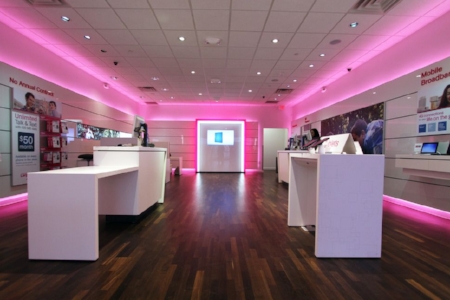The New Rules of Branding
Photo Courtesy of Annie Spratt
At some point during the rise of consumer branding, it became clear that companies could own space in our minds. Through repetition, brands could breed familiarity. Familiarity led to trust. This strategy stretched beyond experience into all company communications. The use of a single brand color, slogan, and typeface became one of the primary ways to maintain brand consistency. Arguably, no U.S. business did this better than retail giant Target. They painted red and Helvetica over everything from commercials to cash registers to live bulldogs. With a consistent and persistent approach, these symbols took on new meaning - value retailing.
McDonald’s was built on the idea that no matter where you were in the world, you’d get the exact same dining experience. When you saw the golden arches from the overpass, it represented complete consistency. Chase Bank has turned each physical branch into a glowing, LED blue eyesore. The goal was to make “blue” and “Chase” mean the same thing. In the battle of the big cell phone carriers, each company put a colored stake in the ground opposite its competitors. When I say the blue, red, yellow, or pink cell phone company, you know exactly which one I’m talking about. The reason that it works is because these companies hit us with a heavy dose of brand color and font until it was committed to memory.
©T-Mobile USA
For a long time this was an effective tactic. Consumers were receptive to this when exposure to branding was confined to TV commercials or the weekly trip to the store. There were only a few platforms to see new products and we welcomed the education. But now, our shopping habits are flexible and our exposure to brands is ubiquitous. Even an experience as mundane as going to the dentist is now bombarded with product logos and slogans from magazines, electric toothbrushes, teeth whiteners, gum disease prescriptions, x-ray machines, not to mention all the brands on your Instagram feed while scrolling in the waiting room. Consistency was the best rule when you only had a few chances to get in front of consumers. Now the chances are limitless. So is the competition.
A brand that consistently communicated a single message used to represent “stability.” Now it means “I’ve already seen that.” Suddenly brand consistency is the pop song played too many times on the radio.
The New Rule of Branding: Flexibility
If consistency was a marquee rule of branding in the last half century, flexibility is its successor.
The most influential brands today are heading towards flexibility. They’re stripping their logos back to basic colors to allow for more creativity on the next campaign. Nike is at the top of the list. And if you don’t believe that Nike is doing branding better than anyone, just read how that whole Kaepernick “debacle” increased their sales 31%. But what color is Nike right now? Their brand color is orange. How often was orange visible in the Kap ad? Never.
Design-forward companies like Nike are now all about tone and creativity, not exact colors and fonts. They’re relying more on black and white as their base color, giving them freedom to communicate in any color or font across the spectrum. Nike still uses its signature color and fonts, but they’re reserved for special moments. When you buy a new pair of shoes, they’re still in the classic orange box.
©Nike
©Nike
©Nike
What is Apple’s color and message these days? How about Sephora? What about Airbnb?
Airbnb doesn’t even brand the product they sell. This is one example of why branding needs to be more flexible. The concept of “product” is less definitive than it was 20 years ago. XBOX is a hugely successful brand. How do you market a product that actually disappears from the experience of using it? 100% of the focus of the XBOX experience is about the game, which they don’t make.
Brand flexibility means that your core message allows for emotion and creativity in context, not just a sentence and color committed to memory. It’s not important that your Instagram posts match your billboard ads that match your in-store signage. It’s important that your Instagram post generate a reaction on Instagram. The nature of that reaction is your brand.
We’re bored of stable and predictable. When we scroll through our feeds, we’re looking to be surprised. Brand repetition is like the friend who won’t stop talking about himself. I get it, I know what you’re about, you told me 15 times before I got in the door. The brands we consume most aren’t delivering consistent brand messages, they’re delivering consistent hits of dopamine. Brands that recognize this and prioritize creativity and impact, letting loose of their tightly scripted guidelines, will win the future.





